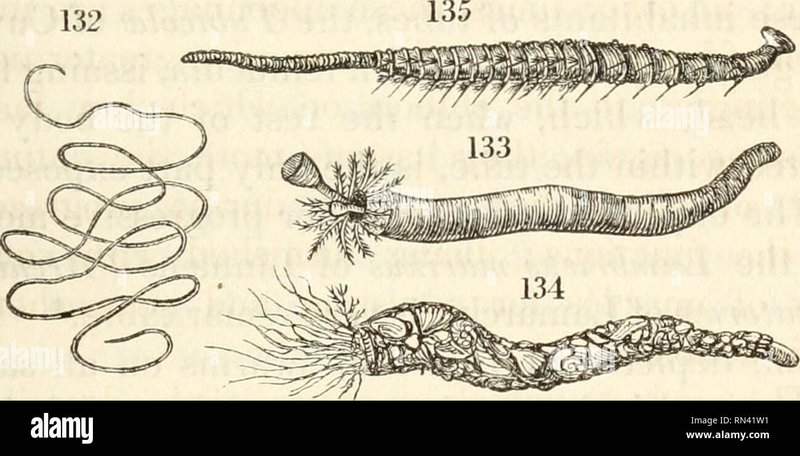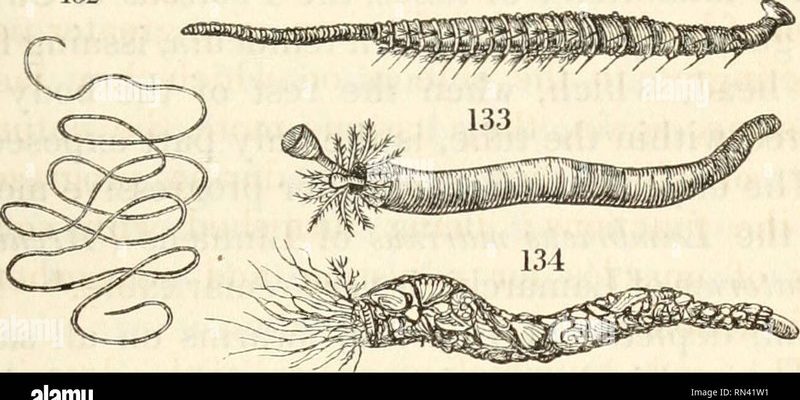
To put it simply, hairworms belong to the phylum Nematomorpha. They’re known for their long, thin bodies and complex life cycle. They usually start their lives in water, but they end up inside various insects, particularly grasshoppers and crickets. If you’ve ever watched a grasshopper hop about and thought it looked a little sluggish, it might just be hosting a hairworm! Now, let’s dive into how these intriguing creatures feast on their unsuspecting hosts.
Understanding Hairworms: The Basics
Hairworms, also called horsehair worms due to their long, thin appearance, are truly remarkable in how they interact with their environment. These parasitic worms begin their life cycle as larvae in freshwater. They seek out an insect host to thrive and grow.
Once they find a host, like a grasshopper, they enter through ingestion. This might sound brutal, but it’s a natural part of their life cycle. Inside the host, hairworms start to grow and develop, often reaching up to a meter in length. You might be wondering what happens next. Well, this is where their feeding mechanism takes an interesting twist.
How Hairworms Feed Inside Their Hosts
Once the hairworm is inside its host, it gets down to the business of feeding. Here’s the thing: hairworms don’t rely on traditional eating habits. Instead, they absorb nutrients directly through their skin. This process is called *osmosis*. Imagine living in a cozy apartment where everything you need—food, water, even air—is just there for you to absorb. That’s what hairworms are doing!
As they feed, the hairworms siphon off nutrients from the host’s body fluids. They essentially hijack the host’s energy. This might sound pretty harsh, but it’s all part of nature’s balance. The grasshopper, however, remains unaware for a while, keeping its usual behavior.
The Host’s Response to Hairworm Infestation
You might be curious about how the host reacts to having a hairworm inside. Generally, the grasshopper or cricket may experience a range of physiological changes. They might feel more sluggish or even exhibit unusual behaviors. You can think of it like a roommate who’s taking all your snacks without asking—eventually, you’re going to notice something’s off!
Interestingly, as the hairworm grows, it alters the host’s behavior in a unique way: it compels the host to seek water. This is crucial because hairworms need to return to water to complete their life cycle. So, while the grasshopper might feel a bit off, it’s actually being driven by the hairworm to jump into water, where it can finally emerge.
The Exiting Process: From Host to Freedom
Once the hairworm is ready to reproduce, it starts to release signals that push the host to seek out water. This is the dramatic part of the story! When the host gets close to a body of water, the hairworm takes its chance.
It manipulates the grasshopper to dive in, where it can swim out and finally take a breath of fresh air—so to speak. This process is quite a spectacle, as the hairworm wriggles its way out, sometimes causing the host to drown. It’s a life-or-death situation that shows the extreme lengths these worms go to complete their life cycle.
Life After the Host: What Happens Next?
Once hairworms have successfully exited their host, they are free to continue their life cycle in water. This is when they can mate and lay eggs, starting the process all over again. You could say that even after the dramatic exit, the story isn’t over yet.
These freshly hatched larvae will swim around, looking for their next victim—be it another grasshopper or a cricket. In essence, hairworms have perfected a concert of manipulation and adaptation throughout their life cycle. They exploit the very essence of survival in nature, teaching us about the intricate web of life.
Why Understanding Hairworms Matters
You might be thinking, “Why should I care about hairworms?” Well, understanding these creatures gives us insight into ecological balance and the roles parasites play in ecosystems. They can help control insect populations, which can be particularly helpful in natural pest control.
Moreover, studying how they operate could lead to advancements in various fields, from pest management to understanding parasitic relationships in other species. So, next time you see a grasshopper, you might just look at it differently, knowing it could be a host for something truly remarkable.
Hairworms have a fascinating and complex feeding mechanism that illustrates the wonders of nature. From their life cycle in water to their manipulative behavior inside a host, they encapsulate the intricate dance of survival. Though they might seem a little creepy, there’s a lot to learn from these tiny creatures.
So, the next time you hear about hairworms, remember—there’s much more happening beneath the surface than meets the eye. They may be small, but their impact on the ecosystem is anything but insignificant. Whether it’s through their unique feeding habits or their dramatic life cycle, hairworms remind us of the interconnectedness of all living things.

